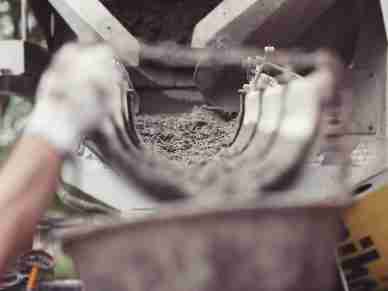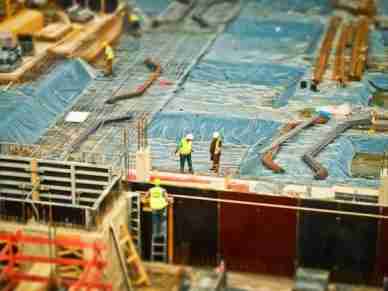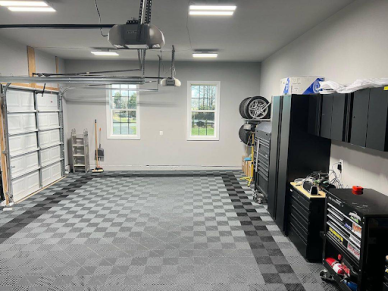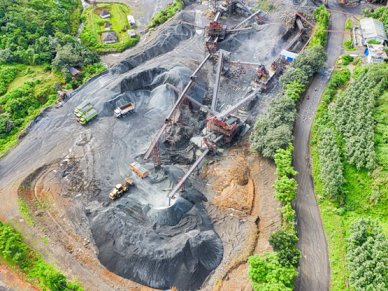
Small construction firms have had a few hectic years, but they’ve stood firm despite fluctuating demand, costs and labor availability. Even though the market shows signs of stabilizing, proactively laying a solid financial foundation is in their best interest. After all, no one can predict when material prices will skyrocket or projects will dry up again.
Why Isn’t Your Financial Foundation Solid Enough?
The construction industry has seen some tough years recently as prices surged and projects dwindled. Of course, the long-term ripple effects of the COVID-19 pandemic on the housing and materials market have only recently begun subsiding.
Some material prices have kept rising. Prepared asphalt and tar roofing increased to 7% in March 2024 from 3.1% in March 2023, for example. However, most have fallen substantially recently. Many that experienced a 10% or higher jump from 2022 to 2023 have stabilized.
By several accounts, the sector is doing well. According to one estimate, its global growth rate will average 2.7% annually from 2025 to 2030, amounting to $16.5 trillion. Moreover, the United States — the second-largest construction market — will have a 15.1% market share by 2030.
Despite the industry’s apparent prosperity, many business owners are left scratching their heads as to why they’re not experiencing success — and they’re not alone. Only 40.1% of the private construction firms established in 2013 made it to 2023. Why is this trend happening amid falling prices and increased demand?
A cost overrun occurs when firms spend more than expected or budget less than necessary. They may not pay premium prices for material anymore, but budgeting, bidding and baseline schedule mistakes are returning to bite them. While it sounds grim, it’s actually a good thing — these blunders are all fixable.
If owners and operators lay a solid financial foundation for their small construction firms, they can increase their resiliency to market changes and protect themselves from cost overruns. While it takes much time and effort, the results are worth it.
3 Financial Strategies for Reducing Spending
Private and public construction spending is on the rise. It totaled over $2 trillion in March 2024 — a 9.6% increase from $1.9 trillion in March 2023. Business owners should reconsider their expenditures if they want to distance themselves from this trend.
1. Opt for Used Equipment
New equipment looks nice but quickly loses its shine. Companies can buy used instead for a fraction of the cost if they’re okay with some wear and tear.
On top of the lower price tag, these machines depreciate slowly, retaining most of their resale value. Their affordability can also increase availability and demand, another point in favor of used equipment.
2. Get Electric Equipment
Construction equipment manufacturers have recognized the value of going green and are making all-electric heavy-duty machinery. Whether firms need a backhoe, excavator or forklift, they can find one on the market today. Although their upfront price is higher than alternatives, they more than make up for it in the long run.
Maintaining battery-powered equipment is generally more affordable. Charging stations charge based on kilowatts per hour instead of gallons of fuel, which is consistently cheaper. Plus, electric vehicles are exempt from excise taxes, further dropping their upkeep costs.
In January 2024, the federal excise tax on diesel was 24.3 cents per gallon and gasoline was 18.3 cents per gallon, which adds up when refueling multiple 100-gallon fuel tanks. If firms have the charging infrastructure and enough capital to invest in an all-electric fleet, their maintenance and operation costs will shrink.
3. Buy Materials in Bulk
Owners can negotiate with their suppliers to get construction materials in bulk at a lower price. While this approach can be risky — it’s only worth it if business keeps coming in — it helps them start projects having already saved room in the budget.
It’s an excellent strategy when costs fluctuate since it protects them from future price hikes.
4 Financial Strategies for Saving Money
Sometimes, firm owners have a hard time figuring out what to trim from the budget. When they’re starting out, every expense seems essential. Fortunately, there are more ways to save money than making budget cuts.
1. Keep a Tool Inventory
Replacing lost or stolen tools can be a frustrating, disheartening experience for companies in their infancy. Luckily, something as simple as inventory can help. This way, owners and site managers know exactly what’s missing. From there, they can narrow down where the item might be and who misplaced it, encouraging workers to pay attention.
2. Take Care of Workers
Hiring someone costs a lot more than keeping workers on. On average, the cost per hire is $3,976, the time to hire is 52 days and the time to reach full productivity is 60 days. Add those up, factor in training and the result is productivity-related losses totaling $120,900. In other words, enterprises technically save over $100,000 just by retaining staff.
3. Trim Unnecessary Expenses
Owners should review their business expenses if they aren’t already, reviewing their spreadsheets line by line to trim unnecessary spending. It’s a tedious task, but they might be surprised by how many things they can cut back on. At the very least, tracking purchases helps them craft a more accurate budget for upcoming months.
4. Don’t Undervalue Projects
Many small construction firms make the mistake of undervaluing their labor and submitting bids that are too low. This tactic is a guaranteed way to make less money and may even drive away potential clients because they associate low costs with cheap work. Expertise, friendly attitudes, flexibility and transparency can all grant better competitive advantages.
Owners may even want to consider raising their bid prices. Charging slightly higher than usual may reduce the number of projects they receive, but it guarantees a higher payout, so there’s virtually no difference. The trick is to find the sweet spot where potential clients still consider them when comparing other firms’ bids.
Proactive, Ongoing Strategizing Is Essential
Small construction brands often face a lack of cash flow, cost overruns and fluctuating project availability, making budgeting challenging. However, that doesn’t mean it’s impossible. Strategies like sourcing used equipment, keeping a running inventory and retaining workers can give them flexibility when issues arise.
Owners should remember most solutions aren’t a one-time fix. In many cases, ongoing planning and periodic reviews are necessary since the market changes often. Keeping on top of the little things can help them stay organized and resilient long-term.















Leave a Reply